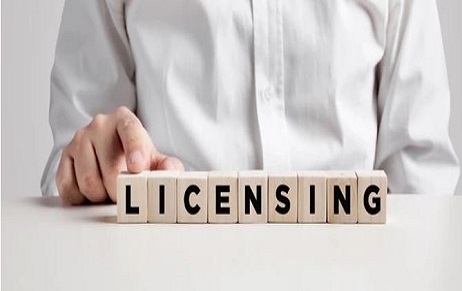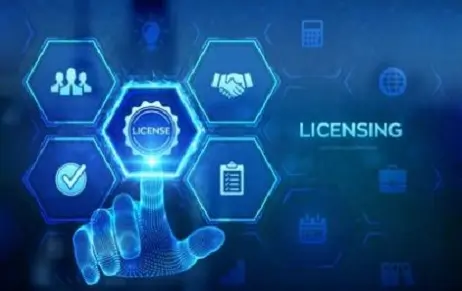Introduction A trademark helps a consumer obtain goods and services of a certain quality and reduces…
The Incongruousness Between Competition Law And Intellectual Property Licensing
Intellectual property is the creative work of human intellect. The primary motivation to protect these ‘knowledge goods’ is promotion of innovation and creativity by striking a balance between protecting the inventor or creator’s rights and fostering follow-on or cumulative developments. Nations do this by granting statutory expression to the to the exclusive economic rights of inventors and creators exclusive rights during a certain period and to the rights of the public in accessing those inventions and creations.
Competition law on the other hand not only promotes competition in the market to ensure free trade but also protects the interests of consumers. The Preamble of the Competition Act, 2002 states that the Act was enacted for the establishment of Competition Commission of India “to prevent practices having adverse effect on competition, to promote and sustain competition in markets, to protect the interests of consumers and to ensure freedom of trade.”
THE INTERACTION BETWEEN INTELLECTUAL PROPERTY LAWS AND COMPETITION LAW
Intellectual property law may apparently seem to be in conflict with competition law since it confers exclusive, though not absolute, rights on the owners of intellectual property. This is to say that intellectual property rights protect innovators or the creators from some forms of competition, consequently allowing them to price at extensively high and supra-competitive levels for certain time period. However, the intellectual property laws and laws such as Competition Act, 2002 ensure that the right holders do not abuse their exclusive rights. The interface between intellectual property rights and competition law is tow fold:
- ensuring that the intellectual property rights not subject to abuse, for instance, in the form of refusal to license, unbridled pricing, abuse of dominant position etc.
- making sure that the antitrust regime is not overbearing and maintains the incentives for prospective inventors to innovate and create intellectual property.
INTELLECTUAL PROPERTY LICENSING AND COMPETITION LAW
Licensing can be defined as the sale of a license authorising another to use something protected by intellectual property laws. The factors that the licensor and the licensee need to consider before entering into a licensing agreement include sharing the risk of manufacturing/production, expenses, costs of research and development, time efficient, market standing, collaboration of new ideas and products.
TRIPs Agreement
TRIPs Agreement recognise the fact that some licensing practices or conditions pertaining to intellectual property rights that restrain competition may have adverse effects on trade and may impede the transfer and dissemination of technology. TRIPs Agreement empowers the Members to specifying licensing practices or conditions that may in particular cases constitute an abuse of intellectual property rights having an adverse effect on competition in the relevant market in their legislation. The Member are authorised to adopt appropriate measures to prevent or control practices like exclusive grant back conditions and conditions preventing challenges to validity and coercive package licensing.
Exclusive grant-back arrangements are frequently entered into to obtain control over new developments or improvements over licensed technology. The licensor requires the potential licensee to agree to grant back to the former rights to improvement patents developed by the latter that relate to the original patent as partial consideration for the license rights.
When the licensee is forced by the licensor to take and pay for additional licenses for patents as a condition of license even if it is not required by the licensee, such license is known as coercive package license.
The Patent Act, 1970 under Section 140 prohibits both exclusive grant-back as well as coercive package licensing in addition to other providing for other restrictive conditions.
Subjection of Intellectual Property Rights to Competition Law – Judicial Development
The debate around whether intellectual property rights are subject to competition law finally came to rest with the landmark judgment in Telefonaktiebolaget LM Ericsson v. Competition Commission of India. Delhi High Court in the case stated that Competition Act, 2002 prescribes certain anti-competitive agreements and abuse of dominance in addition to regulating combinations to avoid concentration of market power in general. Furthermore, the court stated that the Competition Act, 2002 and Patent Act, 1970 are special Acts operating in their respective fields and the Patent Act is a self-contained code. The court observed, “if there are irreconcilable differences between the Patents Act and the Competition Act in so far as anti-abuse provisions are concerned, the Patents Act being a special Act shall prevail.” Moreover, the Delhi High Court found it apparent that the remedies under the two enactments were not mutually exclusive.
Thus, the application of the Competition Act to the cases involving intellectual property rights are not barred before the Competition Commission of India.
Section 3 of the Competition Act prohibits anti-competitive agreements. Section 3(5) of the Act provides that Section 3will not affect the right of any person to “impose reasonable conditions, as may be necessary for protecting any of his rights”. A right-holder, therefore, cannot impose any anti-competitive or unreasonable conditions according to his/her own whims and fancies on the licensee for granting the license. This was further clarified by the Commission in FICCI – Multiplex Association of India v. United Producers/Distributors Forum wherein the commission stated:
“It may be mentioned that the intellectual property laws do not have any absolute overriding effect on the competition law. The extent of non-obstante clause in section 3(5) of the Act is not absolute as is clear from the language used there in and it exempts the right holder from the rigours of competition law only to protect his rights from infringement. It further enables the right holder to impose reasonable conditions, as may be necessary for protecting such rights.”
The test of reasonability imbibed in Section 3(5) was expounded by the Competition Commission in Monsanto cases wherein the Commission observed, “The termination conditions are found to be excessively harsh and do not appear to be reasonable as may be necessary for protecting any of the IPR rights, as envisaged under Section 3(5)of the Act. Such agreements discourage and serve as a major deterrent for the sub licensee from exploring dealing with competitors. The agreements thus, have the effect of foreclosing competition in the upstream Bt Technology market which is characterised by high entry barriers. In view of these aspects, the agreements entered by MMBL with sub-licensees appear to be causing appreciable adverse effect on competition in Bt cotton technology market in India, in terms of Section 3(4) r/w Section 19(3) of the Act.”
CONCLUSION
Licensing arrangements offer major commercial benefits to both the parties involved in the agreements. However, what needs to be paid special attention to is that the licensing agreements do not depriving the parties of legal rights including the ones mandated by the Competition law. Both the intellectual property rights as well as competition laws are collaborative in nature in relation to each other and the licensing agreements should, thus, be formulated in accordance and consideration with all these relevant laws.
Author: Ms. Manasvi Sharma, a 4 th year student of Maharashtra National Law University, (Aurangabad), intern at Khurana & Khurana, Advocates and IP Attorneys. In case of any queries please contact/write back to us at [email protected].



